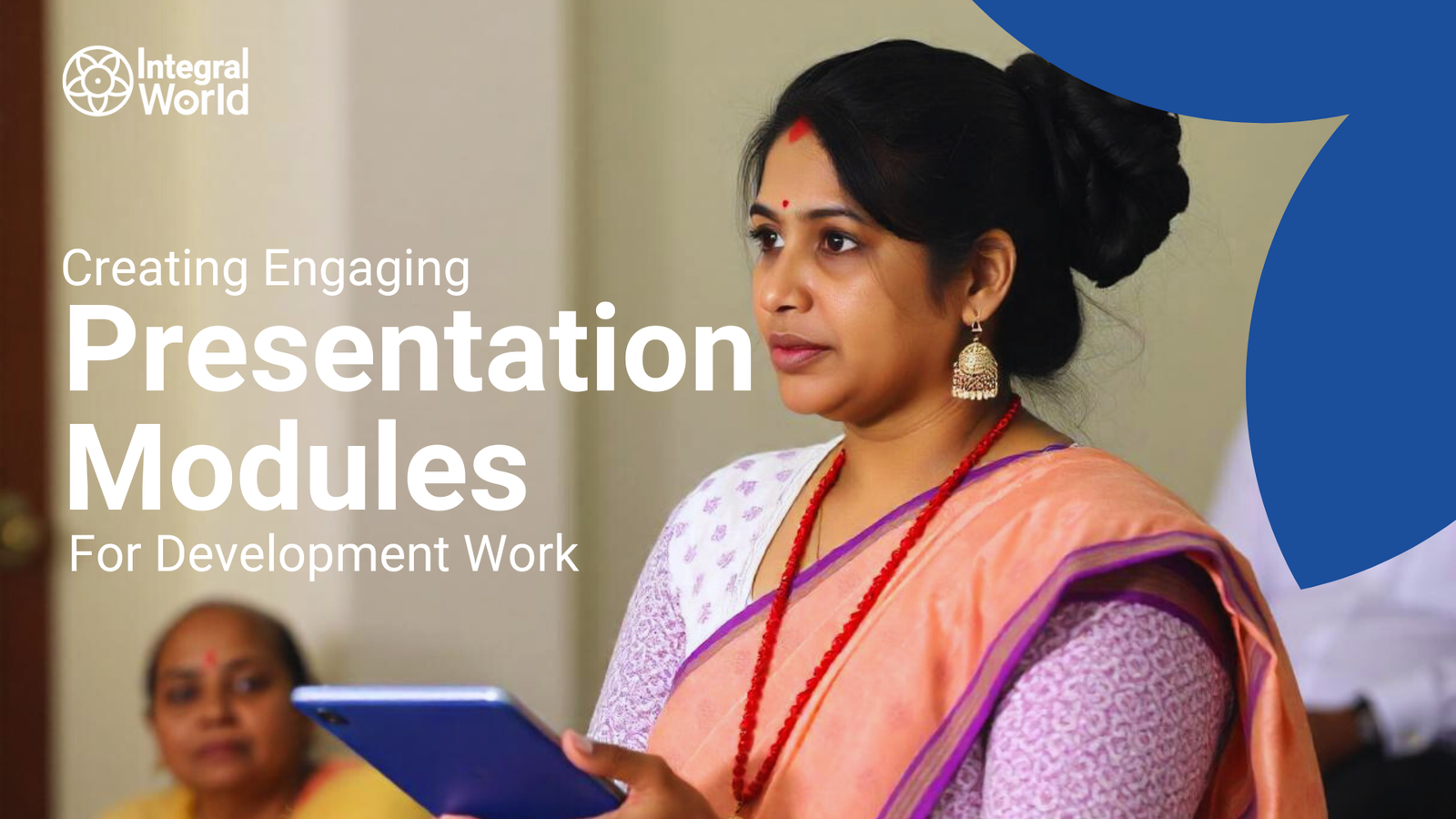Presentations are crucial in development work as they serve as important tools that enhance understanding, engagement and inspire action. In addressing key development issues, effective presentation modules can form the pivot point of deeply understanding and responding to the needs of the communities they seek to serve.
This article explores ways through which organisations can create powerful presentation modules that connect with their audience, drive impactful change and achieve sustainable development goals.
Understanding Community Needs
Needs Assessment
The foundation of creating impactful presentation modules rests on a complete knowledge of the community’s needs. Conducting a needs assessment systematically identifies and analyzes the needs of a community or target population. This is an essential step as it ensures that the presentation modules are pertinent while addressing issues affecting communities most critically.
- Conducting Surveys: Surveying is one of the most effective data collection approaches when it comes to gathering information about community needs. They can be distributed electronically or in paper format to capture both quantitative and qualitative data. For example, surveys may contain questions regarding where people live at present time within your area; what difficulties might they face or what type of assistance would be useful?
- Engaging in interviews and focus groups is one way of reaching out to the people. It provides deeper insights into their experiences and perspectives. This method facilitates unlimited answers that can be understood better by looking at various sides of the same matter.
- Participatory Assessments: These are assessments in which the community is involved in identifying and analysing needs. What this means is that it offers an opportunity for community members to get involved, which empowers them in decision making.

Designing Effective Presentation Modules
Target Audience
When designing an effective presentation module, it is crucial to first define and understand the target audience. In so doing, one can easily grasp who they are presenting to thus tailoring information according to their needs, interests and understanding levels.
- Demographics: Think about the demographic qualities of your listeners such as age range, educational level or work experience. This will determine how difficult the language should be as well as what kind of examples you may give.
- Interests and Concerns: By knowing what catches the interest of people in your audience, you can limit yourself to only relevant subjects. In this example if members of the audience are community leaders then the presentation will centre on strategic planning & development leadership.
Content Structure
Ensure clear communication by structuring your presentation effectively to make complex information easy to understand.
- Introduction and Objectives: To begin with, present a clear introduction detailing aims/goals sought in this talk. Indicate significance attached to this topic and state some things your readers could take home from there.
- Problem Statement: You must first specify which problem or issue relates to your topic before its definition here. As such you must provide some background details concerning these issues in order for listeners to be able to appreciate what these challenges mean.
- Solutions and Strategies: Potential remedies or steps towards addressing that issue ought to be made aware in presentation. For your proposals provide data, case studies and examples. This part is the core of your speech in which you are to make actionable insights or practical recommendations.
- Actionable Steps: Provide the audience with clear steps they can take to implement the resolutions made; this will also involve giving a direction of how one can get resources for them. Here you need to provide a detailed roadmap on how to move forward as well as support for those who may require more help.
Visual Aids and Multimedia
One way through which presentation modules can be more effective is by using visual aids and multimedia that can make difficult information easier to understand and entertain.
- Charts and Graphs: Data representation using charts or graphs helps make information appear nice. These tools simplify complex information, highlight trends, patterns.
- Infographics: Pictorial representation plus text makes info short but exact in infographics. It summarises main points making figures less complicated.
- Videos and Multimedia: Finally multimedia devices such as videos should be used in the presentation so as to maintain stability of interest among listeners. Some contain interviews, case studies while others give demonstrations aiming at showing proof-of-concepts.
Interactive Elements
There should be elements of interaction within presentation modules aimed at increasing engagement levels as well as making audiences participate actively during sessions.
- Q&A Sessions: Another way is by creating time for question answer sessions that seek to clarify any uncertainties while providing additional information. Encouraging communication clarifies issues and addresses various concerns from viewers.
- Group Activities: Having group activities act as a way of getting your audience involved into conversation and team works. Through brainstorming sessions or problem solving exercises some details may stick better in someone’s mind.
- Polls and Surveys: The use of polls or surveys that are conducted live during presentations enables an individual integrating real-time feedback and insight from the audience. By this one can tell how much knowledge is with his/her listeners and thus making adjustments when need arises.
Expert Insights and Quotes
Laura Johnson(Development Specialist): “In development work, effective presentations are not only vessels of information but also catalysts of action.” Organisations can make a difference by deeply understanding community needs and developing tailored presentations.”
Mark Smith (Non-profit consultant): “Developers utilise engaging presentations to drive their development programs forward.” Consequently, an address or talk could have a more lasting effect if accompanied with images or other interactive components.”
Conclusion
Making such vital factuality-based presentation modules interestingly impacts the success of development efforts. Such organisations are able to combine understanding community needs, designing relevant content, using multimedia elements etc., hence make clear deliveries towards insightfulness, engagement and action.
Integral World offers impactful presentation modules that tackle key developmental issues in order to inspire sustainable solutions for organisations. This implies that through our knowledge base and support systems many agencies may develop their presentation strategies aimed at achieving development goals more efficiently.
Are you ready to take your presentation modules up a notch? Get in touch with us today so we can help you create dynamic presentations that’ll be both interesting and effective. Such are the tailored solutions we can provide to help turn your development goals into reality. Let us share our expertise in these areas, as we guide you through the process of achieving your development targets.

